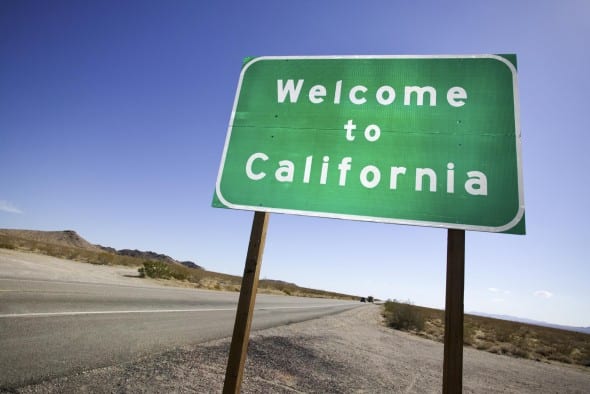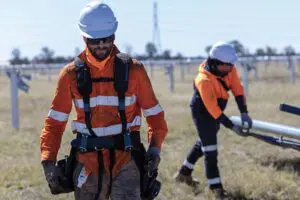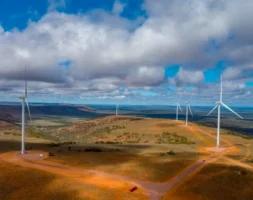During a climate change summit in San Francisco in Sept 2018, former California Governor Jerry Brown signed into law a bill to make the state’s electricity sector carbon free by 2045.
Coming at the end of his last term in office, however, he decided to go a step further by signing an Executive Order to make the state’s economy carbon neutral by the same deadline.
But the debate about how best to get to that target, and at what cost, started much earlier since California has been contemplating to reduce its reliance on fossil fuels while increasing its renewable portfolio for some time.
The general consensus has always been that the going gets progressively tougher, and more expensive, as one gets closer to the end target – once the low hanging fruit has been exhausted.
Some observers have proposed a more gradual approach, extending the deadline farther back while others have argued for an accelerated approach.
Path to a 100% renewables in California, a white paper published in early May 2020 by Wartsila, a Finnish consulting firm, proposes a new path that, it claims, would enable California to meet its goal of 100% clean electricity by 2040, i.e., 5 years ahead of schedule.
Furthermore, the white paper claims that compared to the current plans, its path would save billions of dollars by relying, among other things, on flexible thermal generation that can run on carbon-neutral fuel produced from the excess solar and wind energy.
Rather than facing the increased frequency and duration of renewable curtailments, California can turn the wasted energy into green fuels, which can substitute for the current fleet of natural gas fired plants.
According to the grid operator, CAISO, renewable curtailments have already topped the 1,000,000 MWh mark as of late May 2020.
The state has been adding utility-scale solar plants as well as 9,269 MW of installed behind-the-meter solar capacity, which are mostly responsible for the curtailments.
The Wartsila study compares 3 potential pathways, all meeting the mandatory 60% renewable mix by 2030:
- The first, Current Plan, follows the existing Integrated Resource Plan (IRP) process through 2030 and extrapolates through 2045. This pathway is heavy on solar, some wind, and requires large investments in traditional energy storage. It does not reach full carbon neutrality by 2045 because it allows some residual fossil-generation to cover grid losses, roughly 8% of the total annual load for the state. This is apparently allowed under the current language of the law.
- The second, Optimal Path, includes the power-to-gas (PtG) option as a substitute for traditional storage and achieves the RPS goals by 2040, 5 years ahead of schedule, and total carbon-neutrality by 2045.
- The third, Current Plan without any thermal fossil plants, reaches carbon-neutrality by 2045 without any fossil combustion other than biomass and biogas.As previously reported in the July 2019 of this newsletter, one of the big issues in California is the fate of the existing natural gas fleet, which currently provides much of the flexibility required for California Independent System Operator’s (CAISO) morning and evening ramping rates, the famous CA Duck Curve.
- Phasing out all thermal plants will require a lot more renewable and even more storage capacity. The former will result in unacceptable levels of renewable curtailment, the latter is horrendously expensive even assuming significant cost reductions as storage capacity is scaled up (visual).
- Wartsila proposes power-to-gas (PtG) as an alternative to traditional forms of storage. Instead of curtailing renewables when in excess of load – as is currently the case – it can be used to produce green methane or hydrogen – which can be stored for use at later times.

- The former, power-to-methane or PtM, is suitable for storing and transporting vast amounts of energy using essentially the existing natural gas infrastructure.
- With proper modifications, it claims, the green methane can be substituted for natural gas in households, for industrial processes and in power plants – generating green electricity.Similarly, power-to-hydrogen or PtH uses the excess renewable energy to produce hydrogen from water through a process called electrolysis.
- The resulting green hydrogen is a versatile carbon free fuel.
The downside of PtH is that it requires an entirely new – and expensive – infrastructure for storage and transport. - Current thermal power plants cannot burn 100% hydrogen, nor can existing gas storage facilities, pipelines, compressor stations and distribution lines handle hydrogen.
- Despite this major drawback, producing hydrogen from excess renewables is attractive and offers considerable savings in storing the excess energy in traditional storage media, such as batteries, which are not well-suited for handling large amounts of energy nor for long periods of time, such as for intra-seasonal storage.

-
Warstila is not alone.
Many who study the future of carbon-free electricity systems in Europe and elsewhere are convinced that an efficient thermal fleet using green fuels produced by power- to-gas from the excess renewables coupled with gas storage and delivery systems is much better suited to serves as a gigantic long-duration battery.
Fuel produced by PtG can be stored in large quantities for long periods of time, days, weeks, months or longer – something that batteries cannot do, and there is no leakage.
According to Warstila in such a scenario, the thermal power plants become the inverters (visual above), using the stored renewable energy and converting it back to carbon-free electricity.
Traditional storage such as pumped hydro storage or batteries can handle short-term; while PtG coupled with the thermal fleet provides longer-term balancing, e.g., intra-seasonal.
The same plants can provide reliability and back-up services, e.g., by generating during extended periods when there is no solar &/or wind for days or weeks.
Fereidoon Sioshansi is president of Menlo Energy Economics and founder and editor of EEnergy Informer. Reproduced with permission.










